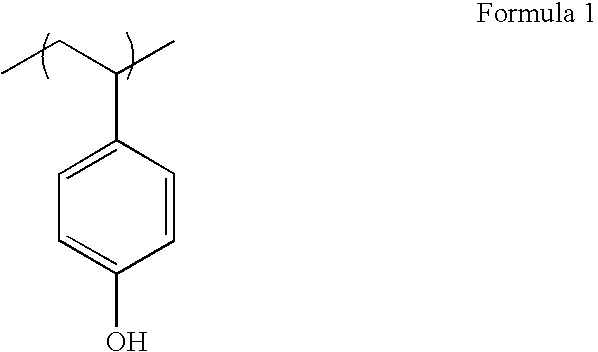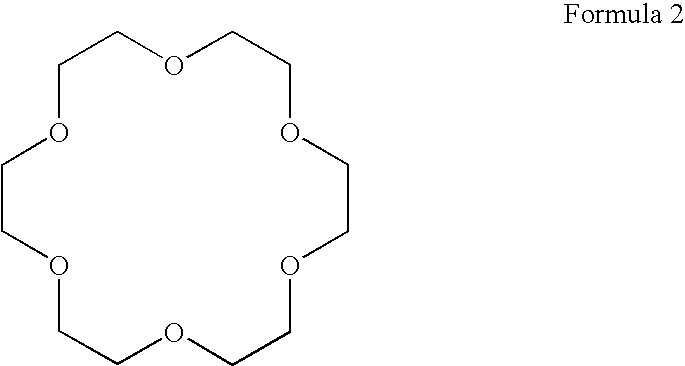Organic anti-reflective coating composition and method for forming photoresist patterns using the same
a coating composition and organic technology, applied in the field of organic anti-reflective coating composition and a method for forming photoresist patterns using the same, can solve the problems of poor inverted trapezoidal pattern instead of the desired perpendicular pattern, and achieve excellent photoresist pattern
- Summary
- Abstract
- Description
- Claims
- Application Information
AI Technical Summary
Benefits of technology
Problems solved by technology
Method used
Image
Examples
example
Preparation of the Disclosed Organic Anti-Reflective Film and Formation of Photoresist Pattern Using the Same
To 13 g of propyleneglycol methyletheracetate solvent, 0.13 g of cross-linking agent of the above Formula 5, 0.2275 g of polyvinylphenol of Formula 2 and 0.085 g of thermal acid generator of Formula 3 represented above, and acid-diffusion resistant agent, that is, 18-crown-6 were added and dissolved, then the resulting mixture was filtered through a 0.2 .mu.m fine filter to prepare the organic anti-reflective coating composition. The obtained composition was processed according to the procedure in the above comparative example to form the desired anti-reflective film and to obtain photoresist patterns shown in FIG. 2.
As illustrated in FIGS. 1 and 2, it was found that the excellent perpendicular photoresist pattern can be obtained by using the anti-reflective coating composition, while poorly inverted trapezoidal patterns having possible collapsed areas thereon were formed by ...
PUM
| Property | Measurement | Unit |
|---|---|---|
| temperature | aaaaa | aaaaa |
| temperature | aaaaa | aaaaa |
| structure | aaaaa | aaaaa |
Abstract
Description
Claims
Application Information
 Login to View More
Login to View More - R&D
- Intellectual Property
- Life Sciences
- Materials
- Tech Scout
- Unparalleled Data Quality
- Higher Quality Content
- 60% Fewer Hallucinations
Browse by: Latest US Patents, China's latest patents, Technical Efficacy Thesaurus, Application Domain, Technology Topic, Popular Technical Reports.
© 2025 PatSnap. All rights reserved.Legal|Privacy policy|Modern Slavery Act Transparency Statement|Sitemap|About US| Contact US: help@patsnap.com



